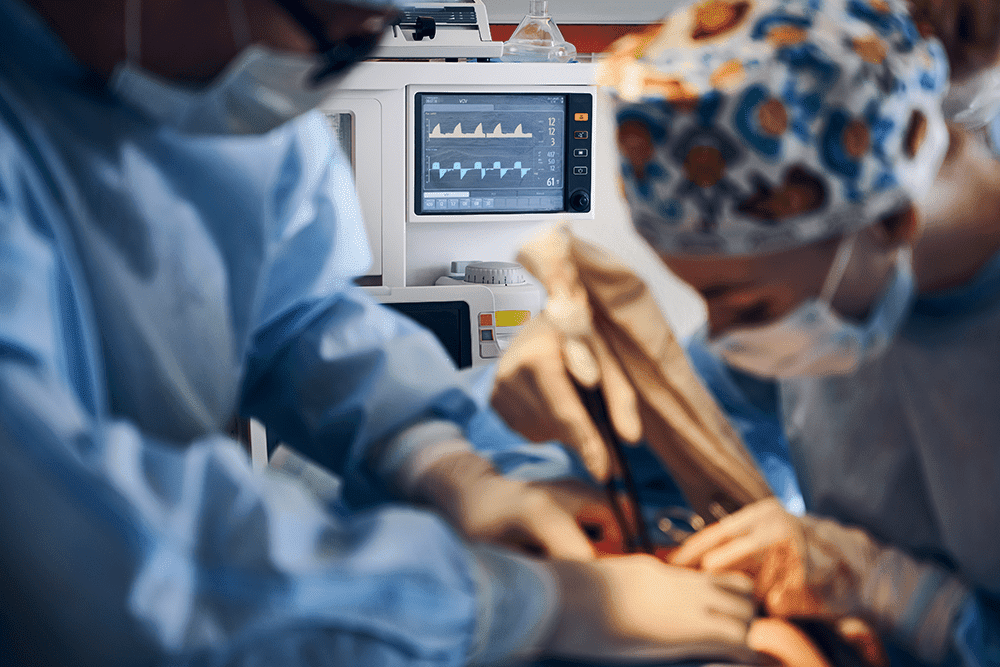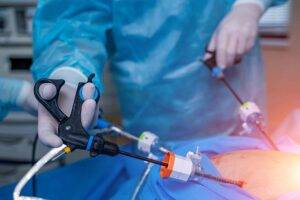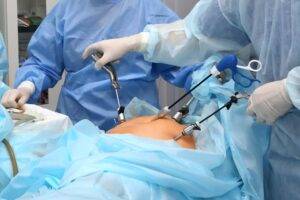In females, the pelvis is situated around the base of the abdomen and contains the uterus, fallopian tubes, and ovaries. The most common problems include endometriosis, adhesions in the pelvis, cysts in the ovaries, and fibroids in the uterus.
In this regard,laparoscopic treatment can be really helpful, where a fertility specialist will inspect the woman’s internal organs and treat conception, preventing problems with minimally invasive procedures. Suppose you are also looking for a reliable destination for laparoscopic infertility treatment. In that case, Kewal Hospital can be a great option as it provides the best Laparoscopy Surgery in Jalgaon and offers multiple variations.
Conversely, patients who have laparoscopy tend to experience a more rapid and pain-free recovery.
Laparoscopic Treatment for Infertility: Know the Types and How Do They Work
Here are a few types of laparoscopic infertility treatments:
- Endometriosis Treatment
Endometriosis occurs when the tissue that resembles the lining or endometrium of the uterus grows outside the uterine cavity.
The development of endometrial-like tissue on the ovaries, intestines, or pelvic tissues is known as endometriosis. Although it is quite unlikely, endometrial-like tissue can occasionally expand outside the pelvic region. Implanted outside of the uterus, endometrial-like tissue is known as an endometrial implant.
Laparoscopic surgery will be needed if you notice severe signs of this condition, such as:
- intense pain and discomfort during menstruation
- bleeding that occurs outside of the typical menstrual cycle
- irregular urination
- unusual weakness
- painful intercourse, etc.
Sperm and eggs have a harder time surviving when the fallopian tubes and fimbriae enlarge and scar from this disease. Fertilized eggs are unable to enter the uterus due to the complete obstruction of the fallopian tubes by scar tissue.
Although this procedure can improve fertility and reduce discomfort in some women, complications can develop later on, particularly if some endometriosis tissue is not removed. Therefore, getting through a detailed professional infertility test like Kewal Hospital’s infertility test in Jalgaon is recommended.
- Ovarian Cyst Removal
Ovarian cystectomy is the medical term for the surgical removal of a cyst from the ovary. Ovarian cysts form on or inside an ovary and are characterized by the presence of a sac filled with fluid or semisolid substance. Hormones and egg cells are produced and stored by the little ovaries, which are located in the pelvis.
Small ovarian cysts rarely create any problems. You can feel pressure, pain, swelling, or achiness when experiencing symptoms on one side of your lower abdomen. It can be severe or gentle, and it could be transitory.
Laparoscopic surgery can help treat this condition effectively in the following ways:
- Laparoscopic ovarian cystectomy aims to preserve ovarian tissue while minimizing blood loss and completing the treatment quickly. Preventing chemical peritonitis and the unintended spread of undetected cancer depends on keeping the cyst intact.
- A few tiny incisions are made in the lower abdomen during laparoscopic surgery, making it a minimally invasive treatment.
- When a cyst presses on other areas of the pelvis, it can cause discomfort, gas, and other symptoms; surgical excision of the cyst can alleviate these problems.
- A week after laparoscopic surgery, most patients can go back to work, and two weeks after the procedure, they can begin vigorous physical activity, like running.
- After open-heart surgery, you should take it easy for six weeks and avoid strenuous activity and heavy lifting.
- Myomectomy:
Uterine leiomyomas, or fibroids, need surgical removal in a procedure called myomectomy or fibroidectomy. Women can get the benefits of laparoscopic surgery to treat this disease as well. Here is how the process can help:
- By utilizing the laparoscopic technique, one may observe the uterus and eliminate fibroids if detected.
- The goals of a laparoscopic myomectomy include uterine reconstruction and the removal of fibroids that are causing symptoms.
- If you are experiencing symptoms like pelvic pain, irregular bleeding, frequent urination, etc., your doctor may recommend this operation to remove your fibroids.
Laparoscopic myomectomy patients, whether they received robotic assistance or not, had a high rate of successful pregnancies within a year of the procedure. You should give your uterus three to six months to heal following a myomectomy before attempting to conceive.
- Adhesion Lysis:
The scar tissue that causes pelvic and abdominal pain can be removed via a procedure called lysis of adhesions. Both open and laparoscopic approaches are available for abdominal surgeries.
Laparoscopic surgery is gaining popularity as a method for surgeons to access, remove, or repair organs and tissues through tiny incisions made in the belly. In open surgery, the surgeon makes a bigger incision to expose the abdomen.
Although scar tissue naturally develops as the body heals after surgery, it can also develop due to infections or inflammatory diseases like endometriosis. We next remove and dissolve any adhesions in the area.
Laparoscopic adhesion lysis is a popular choice since it is a minimally invasive technique that lets the surgeon view the adhesions and break them through small incisions in the belly.
Conclusion:
Finally, laparoscopy is an important method for infertility treatment, and you can reach Kewal Hospital to get the best laparoscopic Infertility Treatment in Jalgaon. It diagnoses and treats reproductive diseases minimally invasively. The odds of a successful pregnancy increase with this surgical method because it allows for detailed assessment and focused therapies. Laparoscopy stands as a significant tool in the entire management of infertility, offering hope and answers to individuals dreaming of forming a family, thanks to its demonstrated efficacy and relatively minimal risk.





